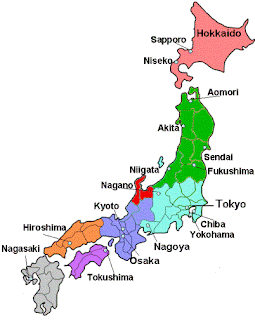Japanese Costumes vs Korean Costumes
Japanese cloths vs Korean cloths
According to the
anthropologist descriptions we all know people migration to Korea and Japan
were done from china. There are main reasons to prove this statement. Because
the nearest countries of china are Korea and Japan. Inculcation, trade,
marital, migration factors can be given for that. Here I’m not going to talking
about historic migration but here I wish to explain such details Korea and Japan
traditional styles of dress have reflected Chinese influence and after
developed characteristic styles of their own. But here we can get an idea when
reading course material TTJ5142 all those traditional fashions of three
countries have as well as similarities and differences. In this letter I hope
to distribute such details by giving suitable five examples.
Styles
When we are considering
styles and design we met long sleeve based and kimono sleeves based cloths.
Some types of Japanese cloths and Korean styles we can see these sleeve styles.
Not only that when we talking about front opening we can wrapped openings in the
china pien-fu, in the Japan kurotome, and in the Korea turumagi and several
traditional dresses. And also when we consider men’s wear all of these
countries long sleeve fully dresses and robs types wear found. We can give
examples for fully dresses for mens in china chang-fu, in Japan men’s yukata
and in the Korean society mens hanbok.
Colours
In china we can see
white colour for regular dresses and also we can see this behavior on Korean
and Japanese regular/ formal, some traditional dresses. Apart white colour we
can see changed colour designs for climatic changes such as red coloured are designed
for summer season, white and black colour cloths are winter. Apart these
details red colour can be seen some Chinese, Korean, and Japanese traditional
dresses.
Raw
Materials
Basic raw materials are
silk and when we distributing widely found Chinese, Korean, and Japanese
traditional dresses were silk or silk based. First silk invented by china and I
think after it had reflected to Japan and Korea. Silk fiber extracted from silk
worm’s cocoon. I suppose silk fabric properties may be affected to choose as
their raw materials for traditional cloth such as smoothness, low weight and
comfortability.
Decorations
Apart colours we can
see some decorations such as flowers, letters using sewing stitches. We can see
these decorations in china pien-fu, shen-i and in the japan men’s and Korea
hanbok styles, chgori etc.
Accessories
When we are talking
about costumes of these three counties we met several accessories such as
traditional hats, umbrella, head and other scarves and sashes. Commonly sashes
we can see in china shen-i, in Japan kimona, furisode, furisode, kurotome and
in Korea yangban styles.
